The question is motivated by the fact that several educational resources around the internet do not calculate the quartiles as the default settings used by matplotlib's boxplot. For example, in the online course, "Statistics and probability" from Khan Academy, the quartiles are calculated as described in Method 1 on the Wikipedia page Quartiles, while boxplot employs Method 2.
Consider an example from Khan Academy's course "Statistics and probability" section "Comparing range and interquartile range (IQR)" . The daily high temperatures are recorded in Paradise, MI. for 7 days and found to be 16, 24, 26, 26,26, 27, and 28 degree Celsius. Describe the data with a boxplot and calculate IQR.
The result of using the default settings in boxplot and that presented by Prof. Khan are very different, see figure below.

The IQR found by matplotlib is 1.5, and that calculated by Prof. Khan is 3.
As pointed out in the comments by @JohanC, boxplot can not directly be configured to follow Method 1, but requires a customized function. Therefore, neglecting the calculation of outliers, I updated the code to calculate the quartiles according to Method 1, and thus be comparable with the Khan Academy course. The code is listed below, not very pythonic, suggestions are welcome.
import numpy as np
import matplotlib.pyplot as plt
import matplotlib.cbook as cbook
from matplotlib.ticker import MultipleLocator
def median(x):
"""
x - input a list of numbers
Returns the midpoint number, for example
in a list with oddnumbers
[1,2, 3, 4,5] returns 3
for a list with even numbers the algebraic mean is returned, e.g
[1,2,3,4] returns 2.5
"""
if len(x)&1:
# Odd number of elements in list, e.g. x = [1,2,3] returns 2
index_middle = int((len(x)-1)/2)
median = x[index_middle]
else:
# Even number of elements in list, e.g. x = [-1,2] returns 0.5
index_lower = int(len(x)/2-1)
index_upper = int(len(x)/2)
median = (x[index_lower]+x[index_upper])/2
return median
def method_1_quartiles(x):
"""
x - list of numbers
"""
x.sort()
N = len(x)
if N&1:
# Odd number of elements
index_middle = int((N-1)/2)
lower = x[0:index_middle] # Up to but not including
upper = x[index_middle+1:N+1]
Q1= median(lower)
Q2 = x[index_middle]
Q3 = median(upper)
else:
# Even number of elements
index_lower = int(N/2)
lower = x[0:index_lower]
upper = x[index_lower:N]
Q1= median(lower)
Q2 = (x[index_lower-1]+x[index_lower])/2
Q3 = median(upper)
return Q1,Q2,Q3
data = [16,24,26, 26, 26,27,28]
fig = plt.figure(figsize=(6,1))
ax = fig.add_axes([0.1,0.25,0.8,0.8])
stats = cbook.boxplot_stats(data,)[0]
Q1_default = stats['q1']
Q3_default = stats['q3']
stats['whislo']=min(data)
stats['whishi']=max(data)
IQR_default = Q3_default - Q1_default
Q1, Q2, Q3 = method_1_quartiles(data)
IQR = Q3-Q1
stats['q1'] = Q1
stats['q3'] = Q3
print(f"IQR: {IQR}")
ax.bxp([stats],vert=False,manage_ticks=False,widths=[0.3],positions=[0.4],showfliers=False)
ax.set_xlim([15,30])
ax.set_ylim([0,1])
ax.xaxis.set_major_locator(MultipleLocator(1))
ax.spines["right"].set_visible(False)
ax.spines["left"].set_visible(False)
ax.spines["top"].set_visible(False)
ax.yaxis.set_ticks([])
ax.grid(which='major',axis='x',lw=0.1)
plt.show()
The graph generated is



